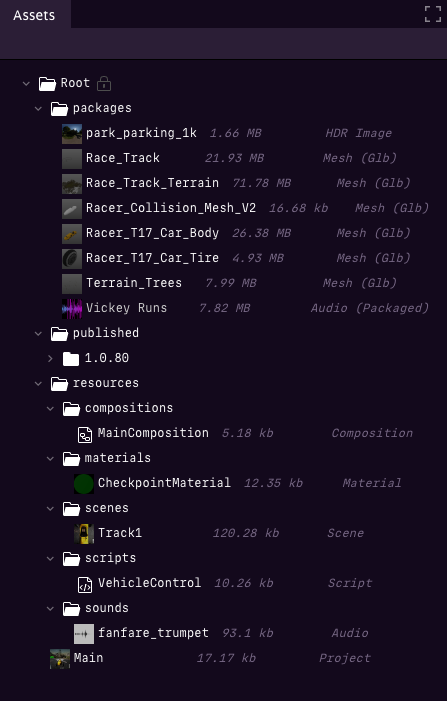Asset View¶

Asset view for an example project¶
The Asset View panel provides a structured overview of all the items that make up your game project. It organizes project resources into a clear directory structure that follows several important conventions, helping developers manage and locate assets efficiently.
Directory Structure and Conventions¶
Main Project Item: The root item of your project is always named Main. This serves as the entry point for the game, containing core configurations and references to other resources.
Resources Folder: All resources you create for the game are stored in a folder named resources. Within this folder, subdirectories are organized by item type:
Meshes are stored in the meshes folder.
Materials go in the materials folder.
Textures, audio files, and other assets each have their designated folders, making it easy to locate and organize assets by type.
Packages Folder: Any external packages that you link from the asset store are referenced here. However, these packages are only copied to your project’s packages folder when publishing. Until that point, packages are directly referenced from the asset store, which helps save storage space and accelerates loading times. By keeping package references external until publishing, your project remains lightweight and efficient during development.
Published Folder: When you publish your game, the system creates a folder within published named according to the major, minor, and revision version numbers of your game (e.g., 1.0.0). Inside this versioned folder, a package is created that contains the full, public version of your game. This published package becomes available in the public games area, allowing anyone to play it.
If you publish a new version of your game, consider updating the name or unpublishing the previous version to avoid confusion among players. Maintaining a single version helps ensure users access the latest release without ambiguity.
This directory structure in the Asset View provides an organized and intuitive approach for managing all project assets, from development through to publishing, ensuring that resources are easy to find and maintain throughout the game’s lifecycle.